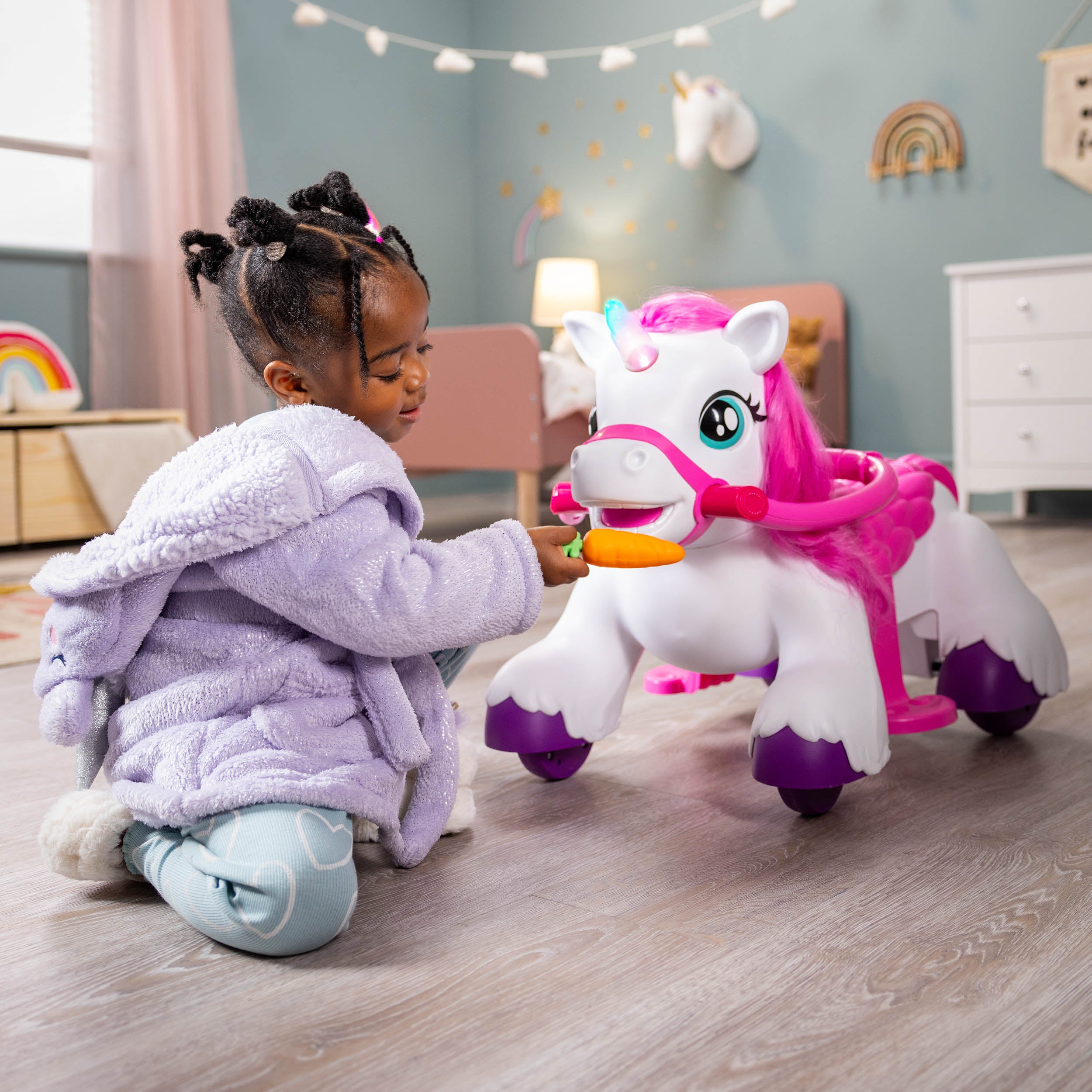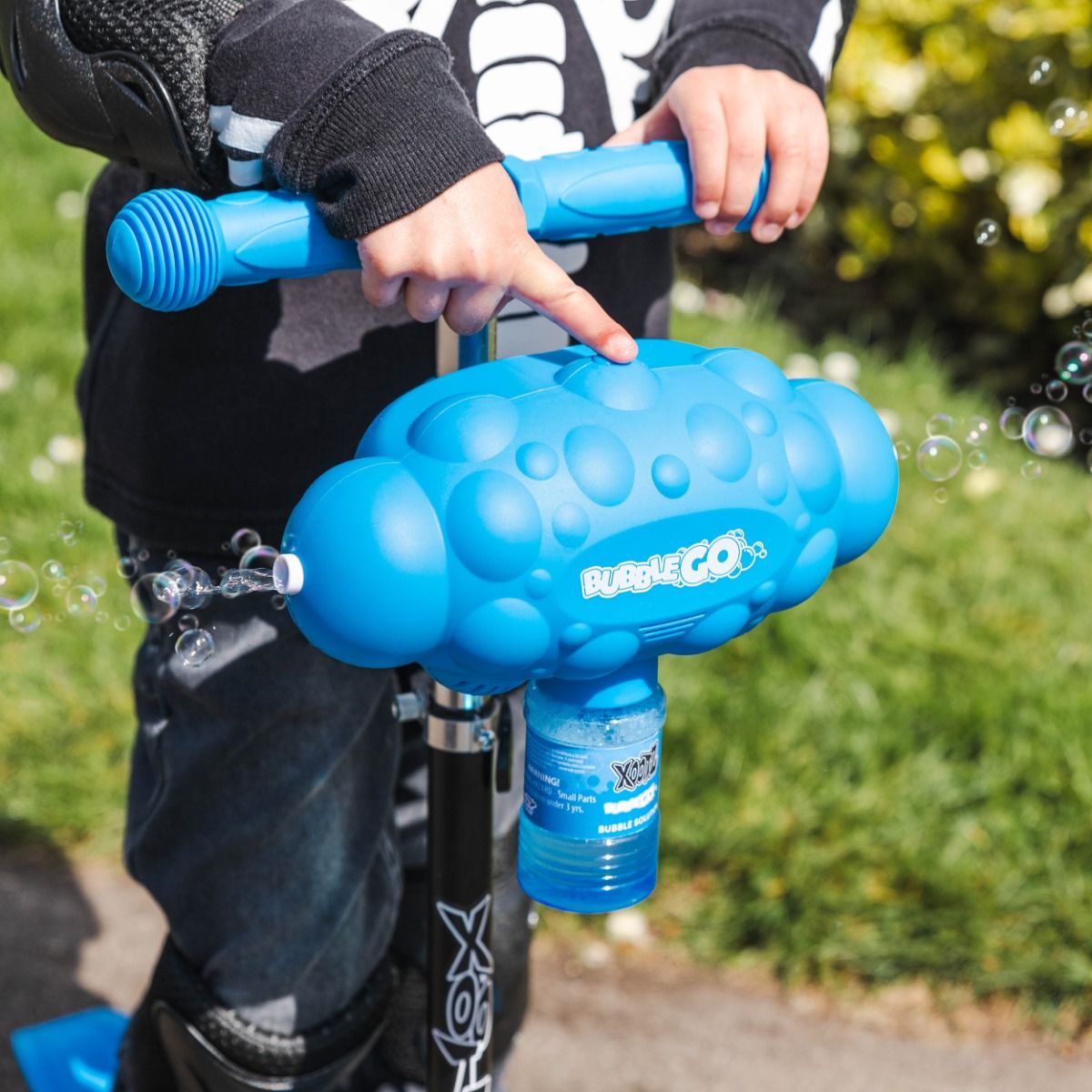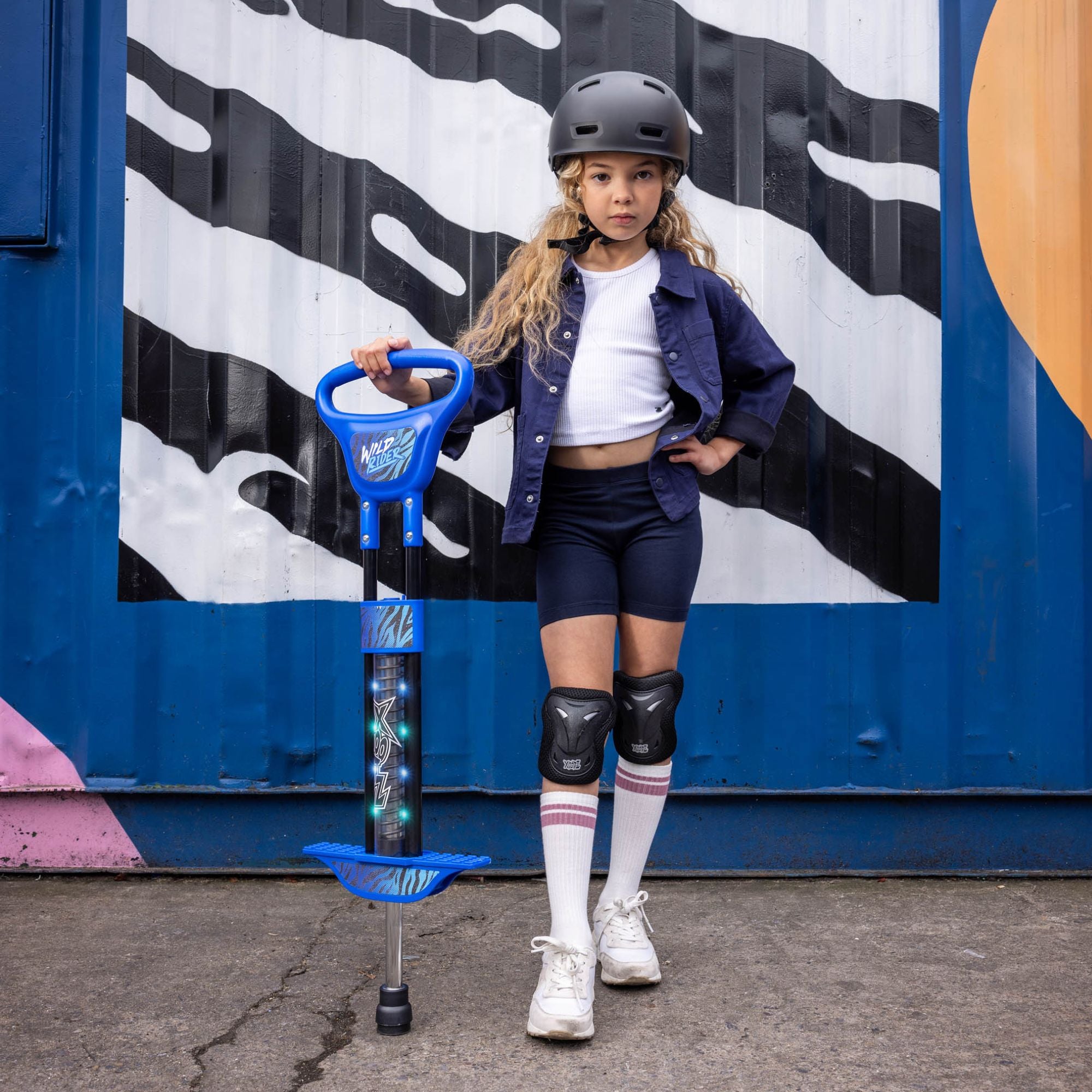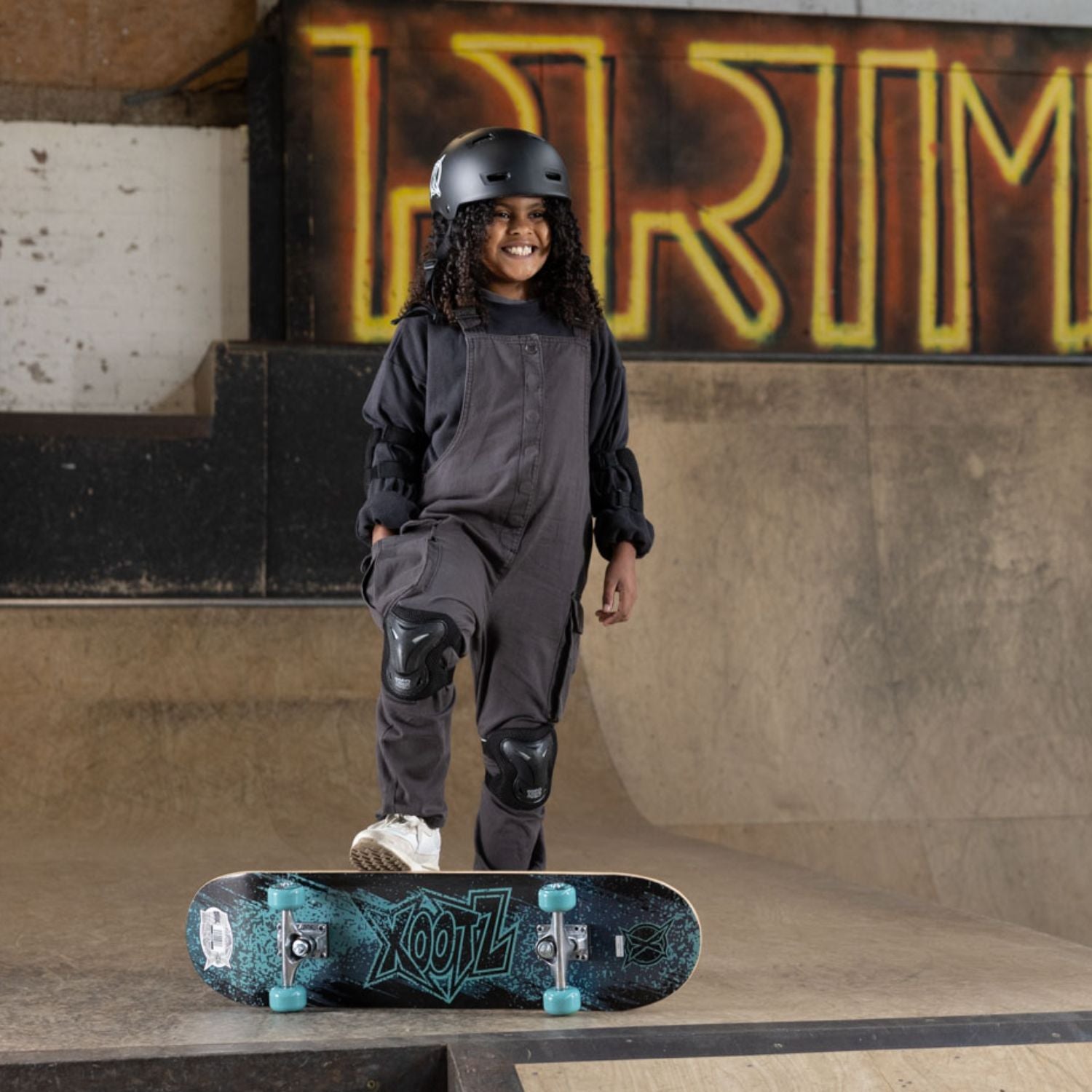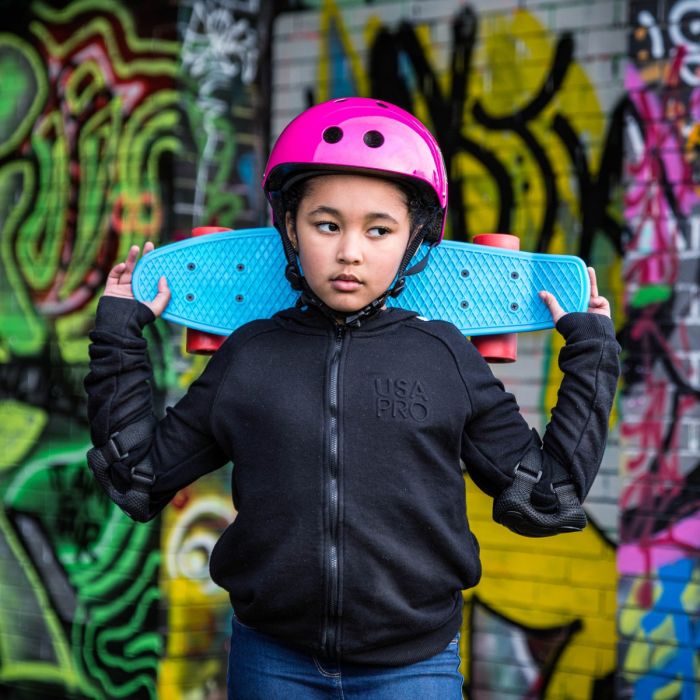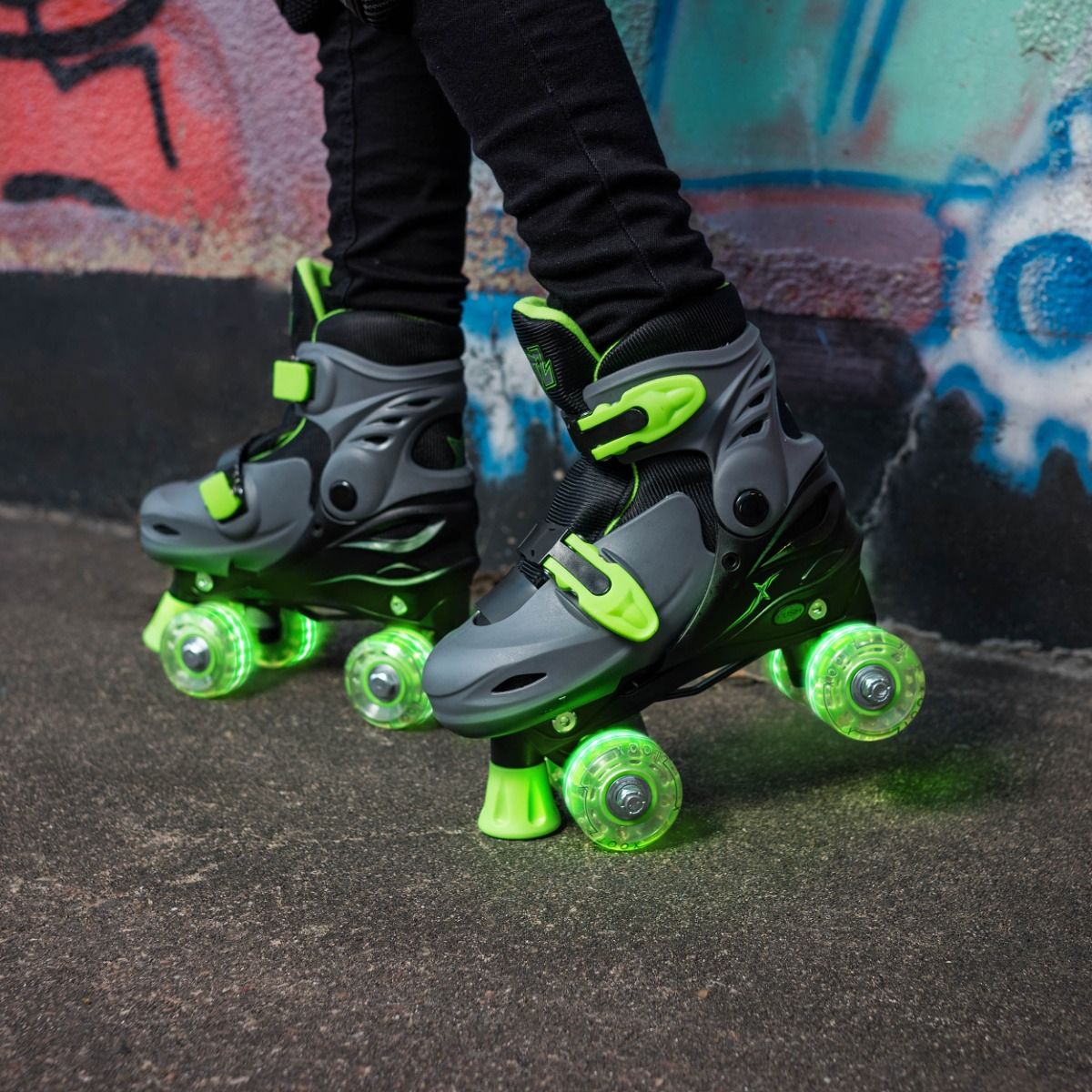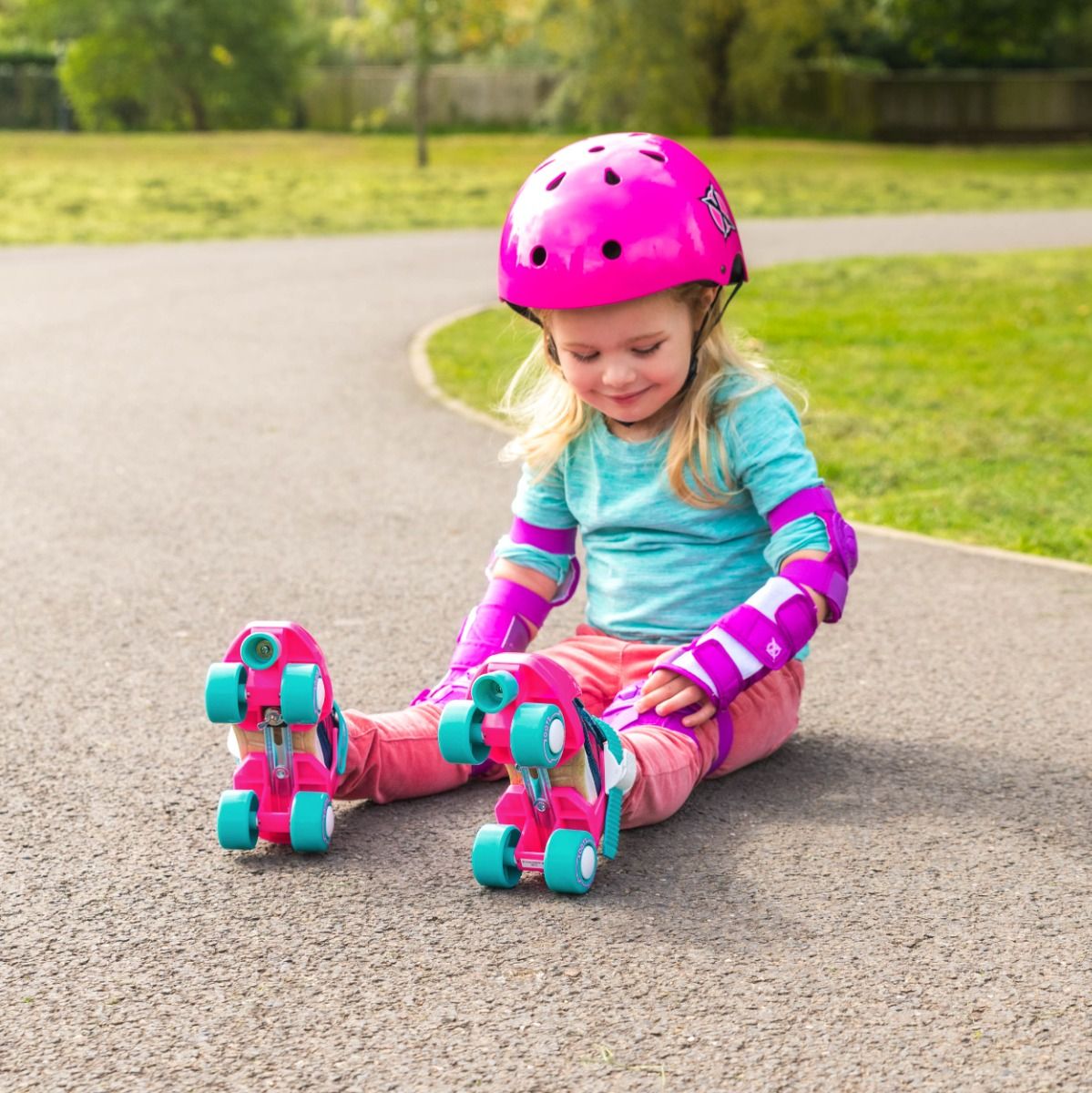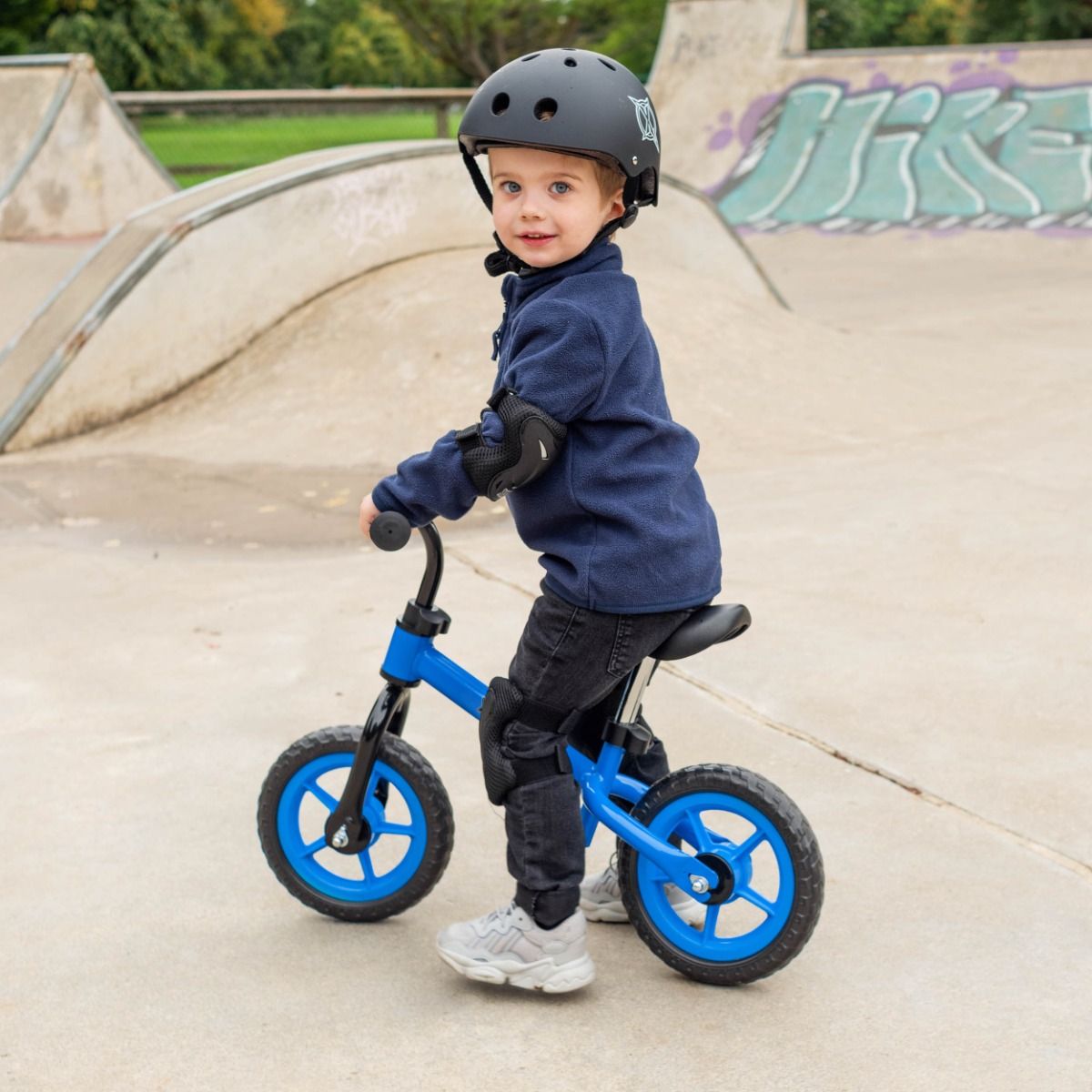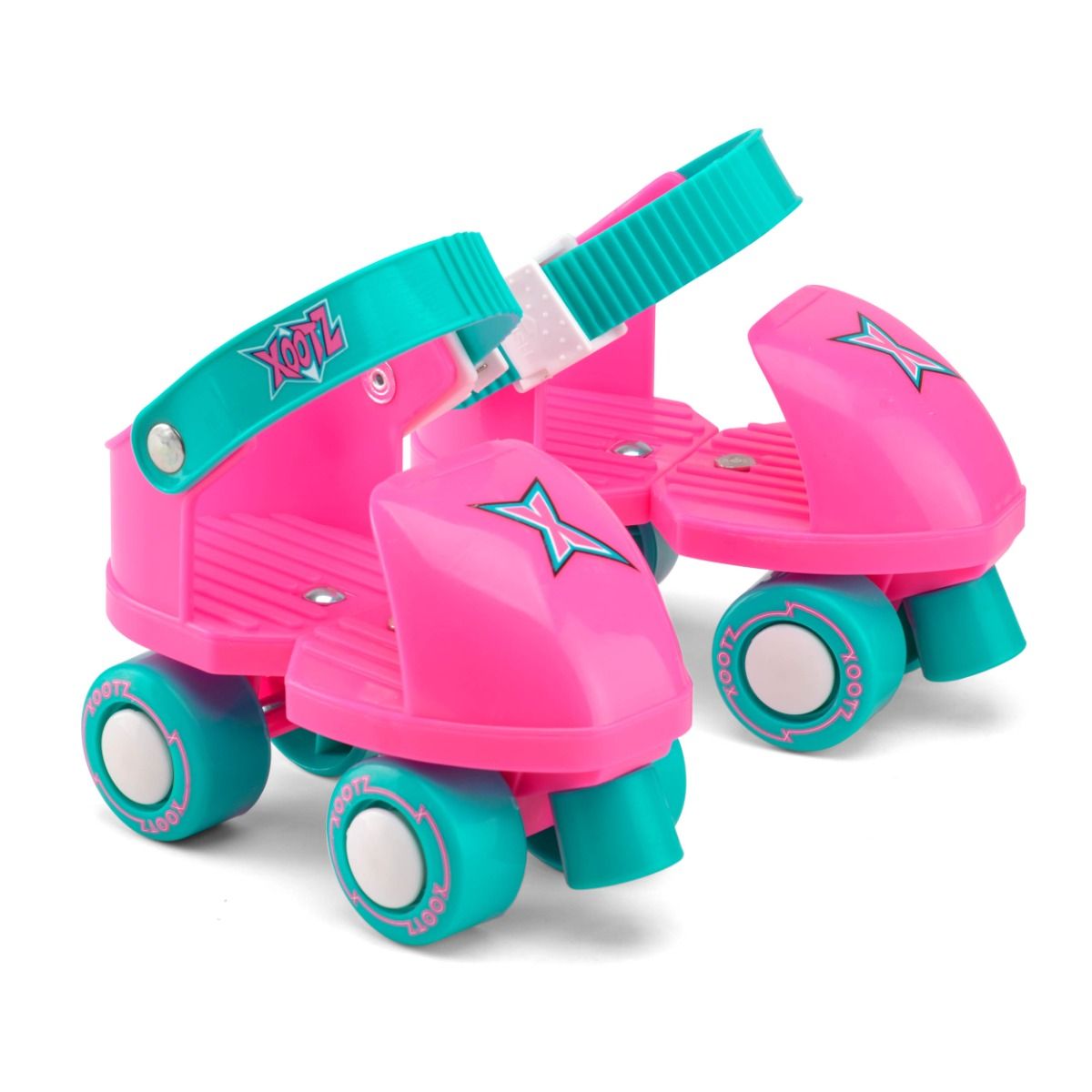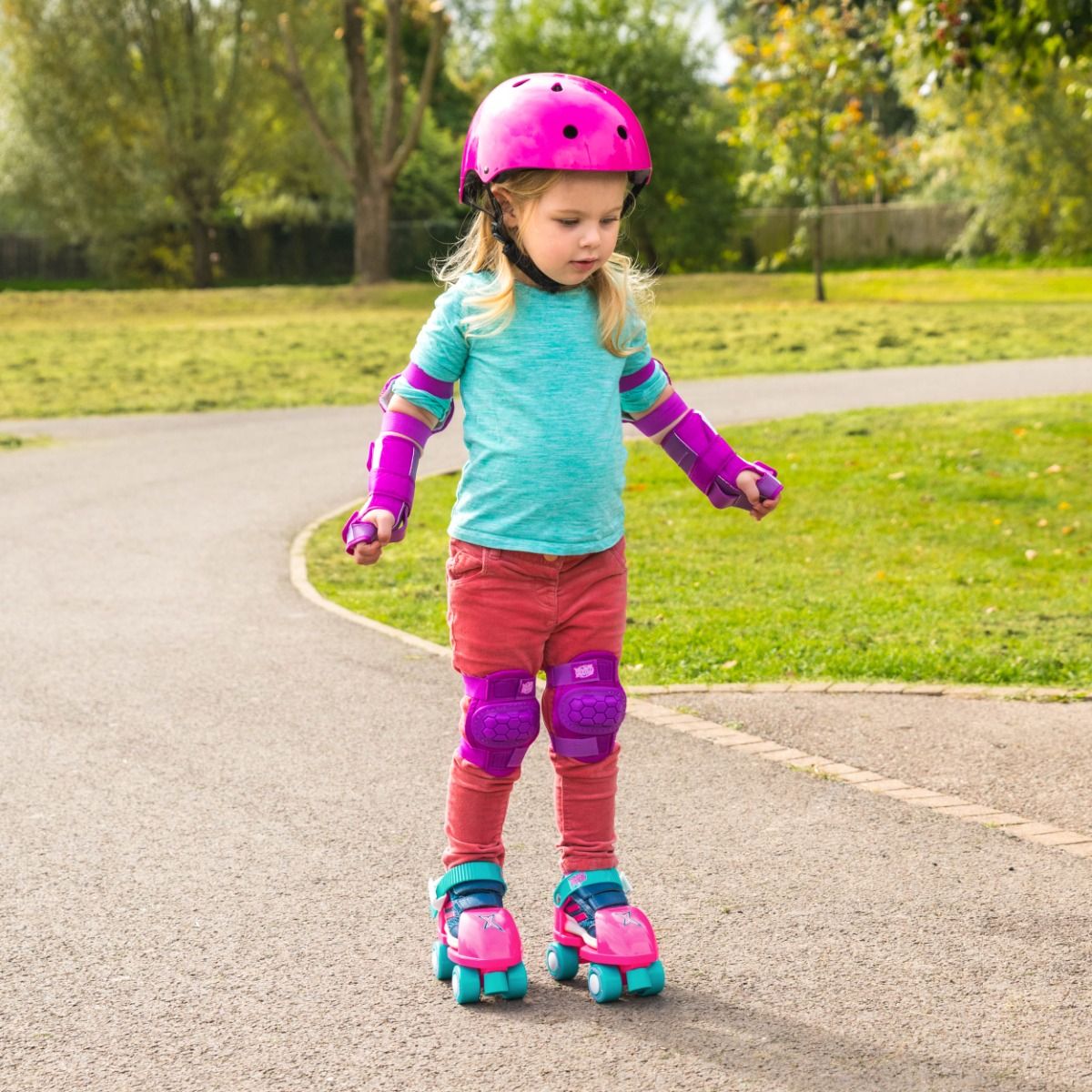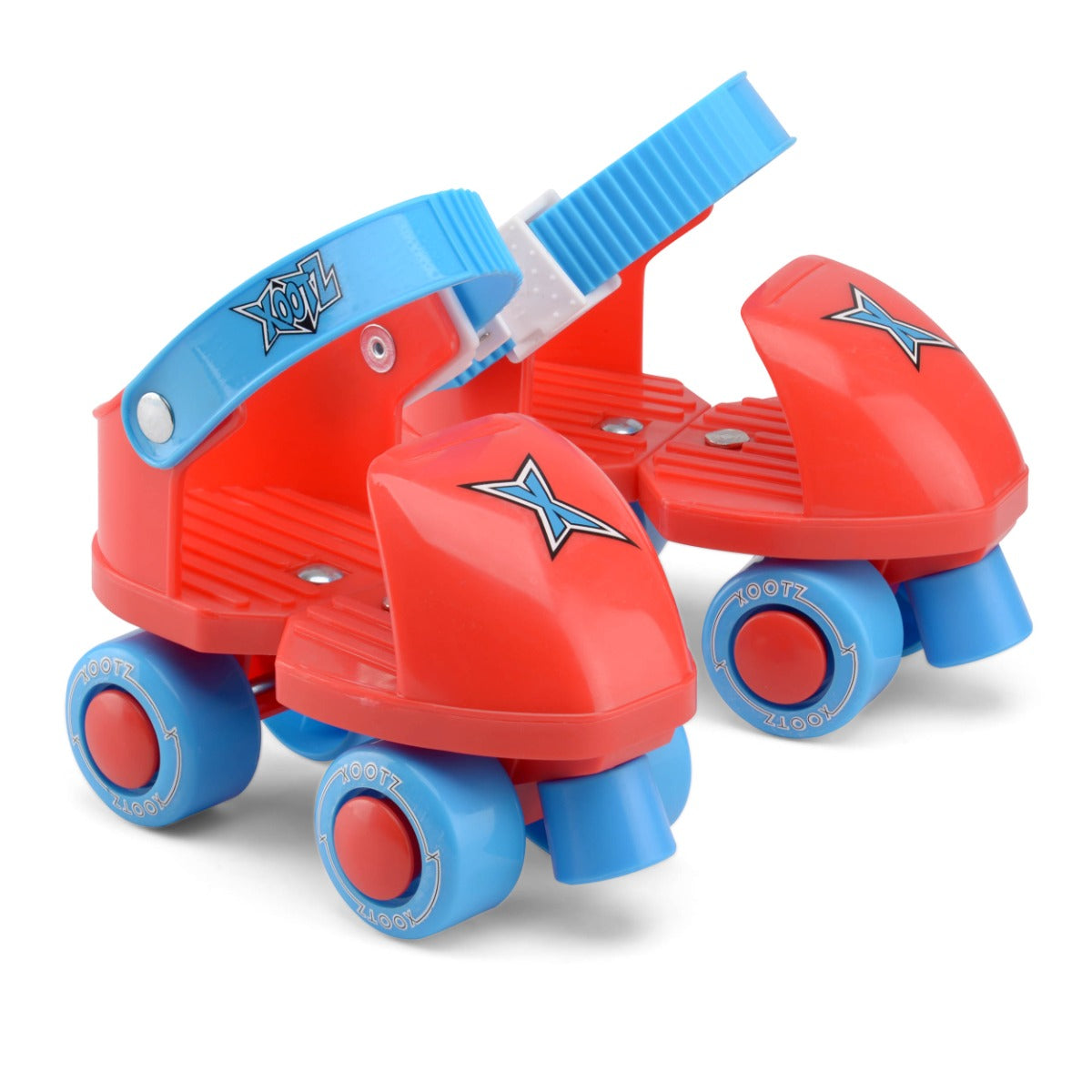Skate Guide
What Type of Skates Are There?
There are two main styles of skates for you to choose from, each offering unique capabilities. The two main types are; Inline Skates (sometimes known as rollerblading) and Quad Skates (sometime known as roller skates).

Quad Skates
WHEEL CONFIGURATION
Wheel configuration for roller skates bare resemblance to a car, with two wheels in front and two wheels at the back.
SKATE BRAKING
Stopping with these skates is done with the toe, by using the brake mounted on the front
WHAT ARE QUAD SKATES GREAT FOR?
- Indoor skating and riding around on smooth outdoor surfaces
- Quad skates are slower making them a great option for beginners
- Offering great stability with the front and back wheel configuration
WHAT ARE QUAD SKATES NOT SO GREAT FOR?
- Achieving high speeds is difficult
- Quad skates can sometimes offer less ankle support than inlines, however this does depend on the design
- Skating on uneven surfaces

Inline Skates
WHEEL CONFIGURATION
An inline skate (or rollerblade) have two to five wheels which are arranged in lines which are contained within a frame.
SKATE BRAKING
Stopping with inline skates is done with the heal, by using the stopper brake located on the back
WHAT ARE INLINE SKATES GREAT FOR?
- Getting up to high speeds and avoiding obstacles due to configuration of wheels
- Great for outdoor skating
- Offer excellent ankle support
WHAT ARE INLINE SKATES NOT SO GREAT FOR?
- Indoor skating
- Inline are often not the choice for beginner skaters due to the wheel configuration and balance
What Skates Are There For Beginners and Kids?
Choosing your kids’ first pair of skates is an exciting time, and it is important that the right skates are chosen to maximise your kid’s enjoyment. There are several factors that can be considered, but to make things simple we have created five core categories.
SKATE TYPE
Quad Skates (or Roller skates) and Inline Skates (or Rollerblades) offer a few different benefits and drawbacks. The most important difference however is that Quad Skates are good for indoor skating and skating on flat surfaces outdoors, whilst Inline Skates are best for outdoor settings.
SKATE BOOT STYLE
A high-top skate delivers great ankle support and is therefore a great choice for a beginner who is likely to take the odd fall. These skates will therefore help to prevent the ankle being rolled.
SKATE BOOT MATERIAL
A skate boot manufactured with manmade materials offers great breathability and lightness. Although not as classic looking as a leather boot, the advancement in technology makes it possible to have some spectacular and eye-catching designs which your kids will love.
SKATE WHEELS
Wheel Size – Smaller wheeled skates are best for beginners as they are slower than larger wheels.
Shape – Flatter profile wheels are best for beginners as they provide more stability and have greater grip and resistance, preventing the ability to achieve high speeds.
SKATE BEARINGS
Skate bearings of ABEC 1 up to 7 rating are best for beginners as they are precise enough to skate with relative ease, but not a high enough rating where the rider will feel out of control.
What Skates Are Best For Intermediate/Advanced Riders?
If your kid is an intermediate or advanced rider, the core elements of their next pair of skates are likely to be different to when they first started out. Take a look at our breakdown of what we recommend for each core skate feature.
SKATE TYPE
Depending on where your kids like to skate or the sport they play when skating, they are likely to have already developed a preference to which skate type they want. If theyre keen to start performing freestyle tricks or stunts on the streets, then Aggressive Skates may be a better option. These skates have no built in brakes and have special frames for grinding on rails and ledges.
SKATE BOOT STYLE
Mid-top and low-top skates may be chosen by an advanced skater as they provide more manoeuvrability and freedom to perform more daring manoeuvres than restrictive high-top skates.
SKATE BOOT MATERIAL
Manmade materials are lightweight and breathable, but if you are competing with quad skates, then a more classic leather design may be more stable. These are however often more expensive and heavier than man made materials.
SKATE WHEELS
Wheel Size – Smaller wheeled skates enable agile turns and tricks and are therefore a perfect choice for freestylers. Larger wheels will however suit those who are looking to reach high-speeds, perhaps for speed-skating or when commuting to work.
Shape – Pointy wheels are great for larger wheels skates with the aim of achieving high speeds. A very flat aggressive wheel will however be great for an advanced skater looking to perform tricks regularly.
SKATE BEARINGS
An advanced rider is likely will opt for a wide variety of bearings. Aggressive skaters will want ABEC ratings of around 5 whereas a skater looking for speed may look for an ABEC rating of 9.
What Size Skates Should I Get?

If you want to double-check your child’s shoe size it is possible to do it yourself. We recommend that you wear a sock when you do this to gain a true representation of what size you need to be for a skate. Place the back of your heel against a flat wall on a piece of paper and then mark the tip of the toe on the paper. Then take a ruler and measure the length.
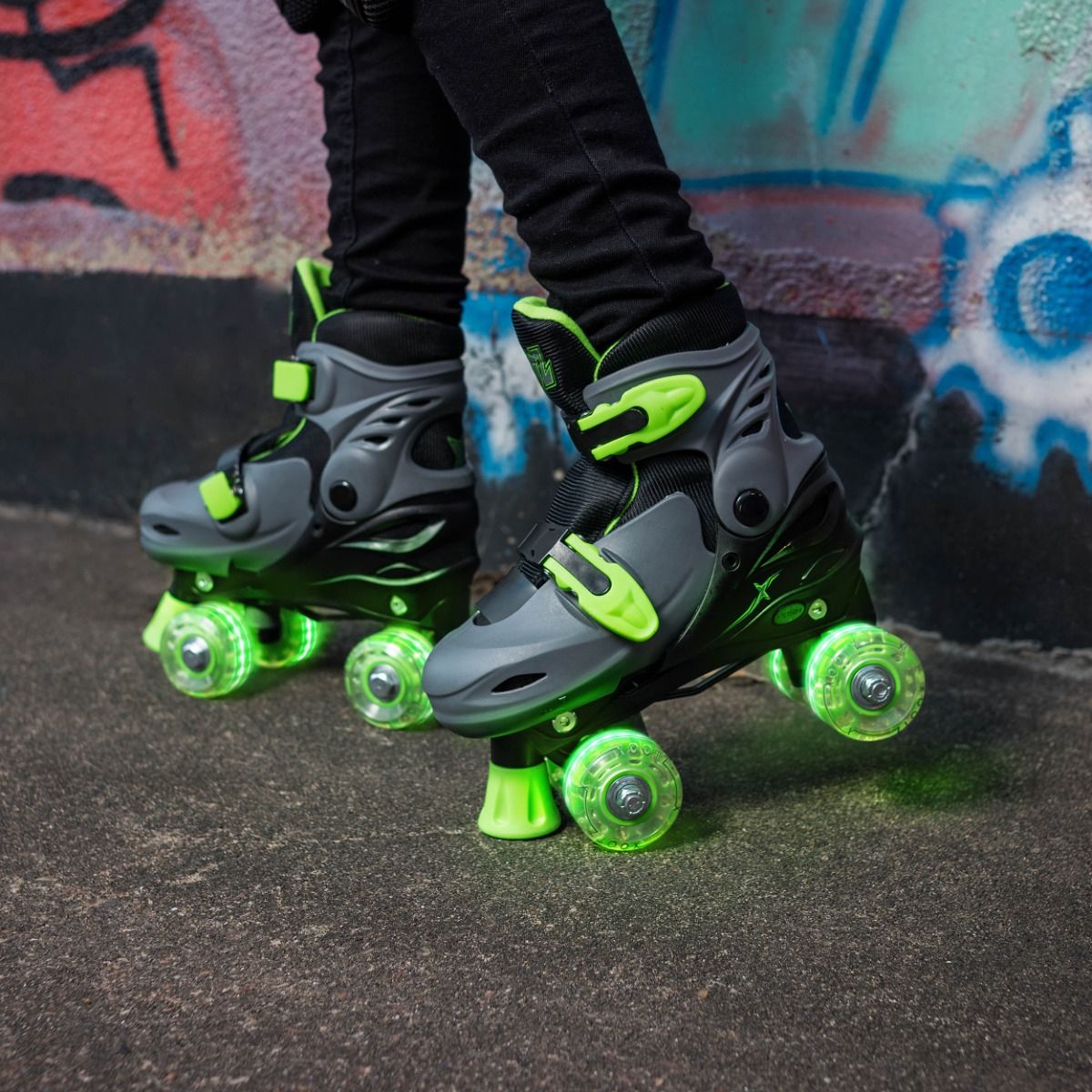
Make sure that your child is comfortable in the skate. For inline skates where they ratchet tight, it is important that this is not too tight as this will make for a uncomfortable skating session for your child.
If you want to double-check your child’s shoe size it is possible to do it yourself. We recommend that you wear a sock when you do this to gain a true representation of what size you need to be for a skate. Place the back of your heel against a flat wall on a piece of paper and then mark the tip of the toe on the paper. Then take a ruler and measure the length.
Make sure that your child is comfortable in the skate. For inline skates where they ratchet tight, it is important that this is not too tight as this will make for a uncomfortable skating session for your child.


What Accessories Are Available For Skates?
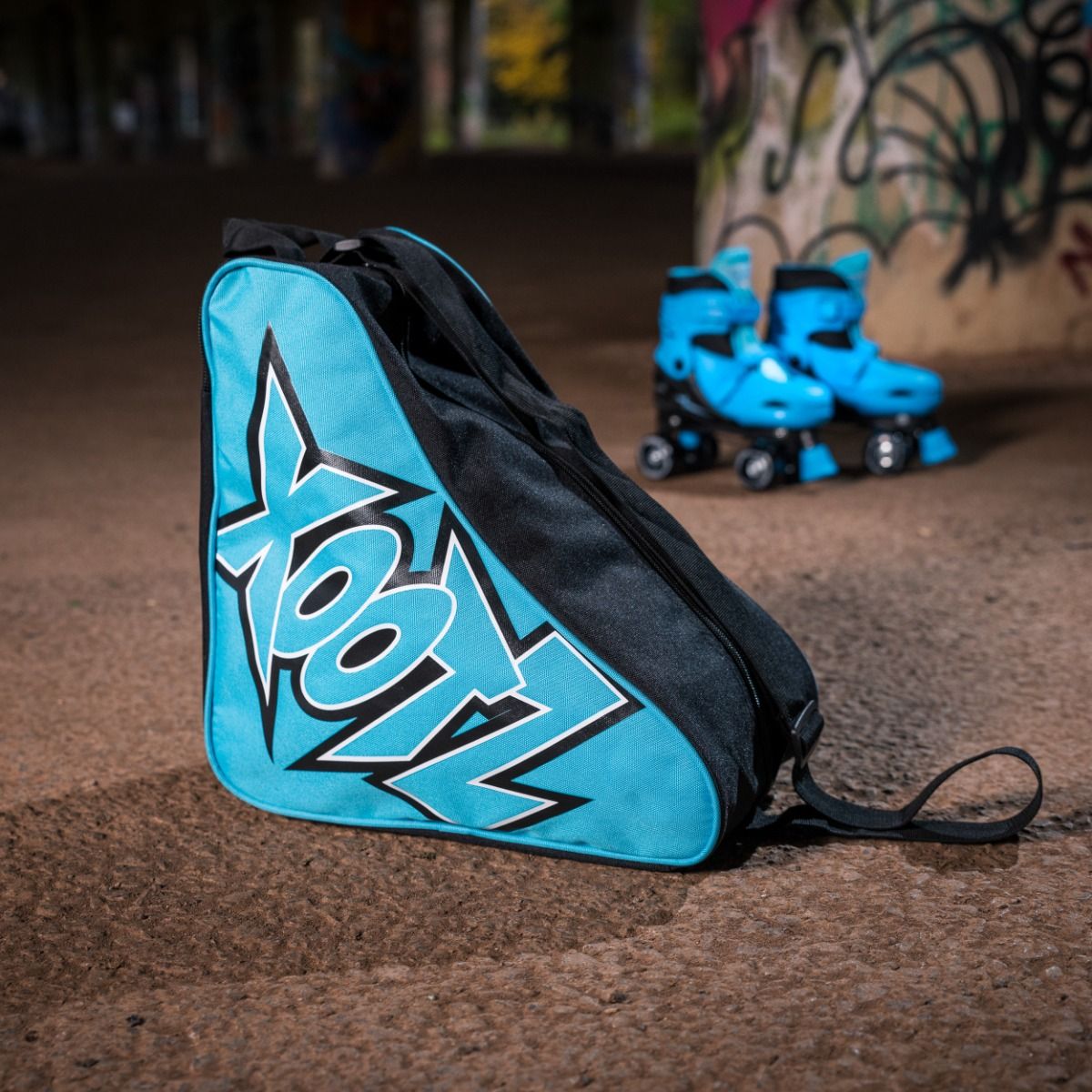
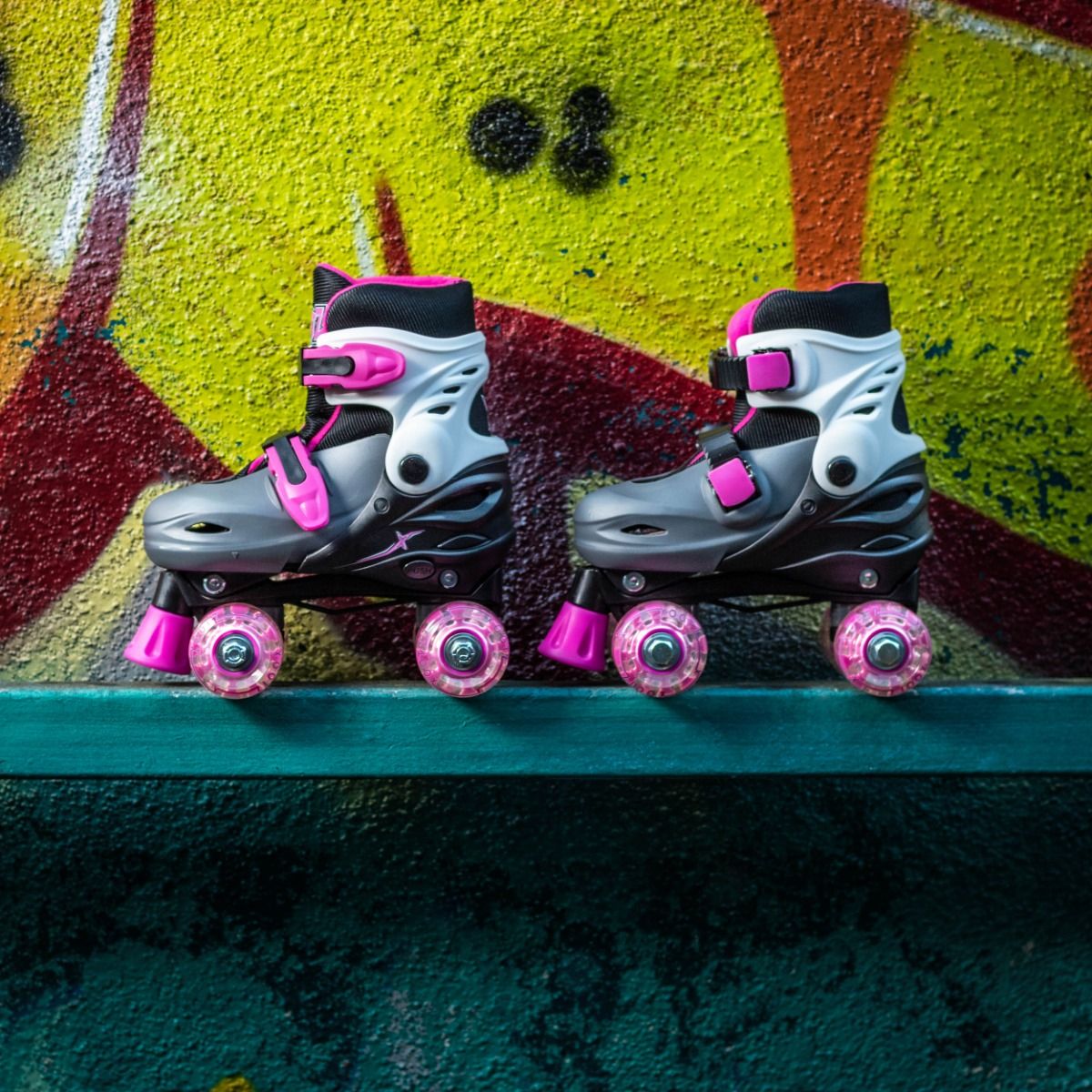
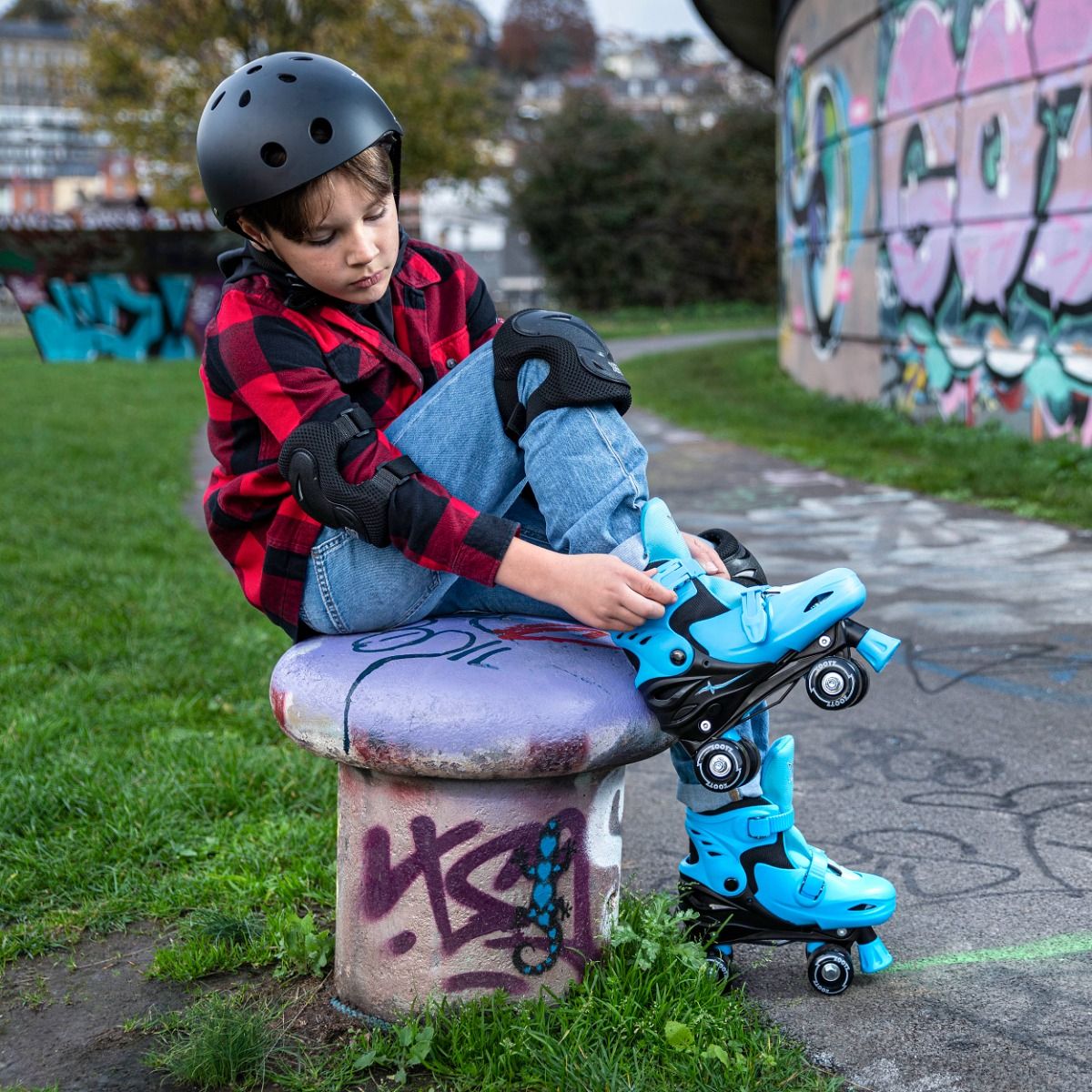

Wheels
If you want to change how soft or hard your wheels are, you can! Simply remove your wheel and replace with a wheel that matches the durometer, size and shape you want
Bearings
If you want better ‘roll out’ select a bearing that has a greater ABEC rating.
Brakes
One of the most popular ways to upgrade brakes, particularly on quad skates is to add an adjustable toe stop. This will allow you to adjust exactly how much you need to tilt your foot forward to apply the brakes.
Skates Bag
A skates’ bag is a great tool to have. It keeps your skates dry and makes them much easier to transport when you’re not wearing them.
What Makes Up A Complete Skate?
There are a variety of different features that make up a pair of skates. Both inline and quad skates feature the same core elements.
THE SKATES’ BOOT
All skates have skate boots which is the most important aspect for achieving optimum comfort. Just like any shoe, it is important ensure that the boot fits right. An ill-fitting skate boot will put you off skating for long periods at a time and will greatly impact your roller skating.
WHAT ARE DIFFERENT SKATE BOOT STYLES?
The three most common styles of skate boots are ‘High Top’, ‘Mid Top’ and ‘Low Top’ skates. There is no right or wrong answer for which to choose and is often decided based on the sort of skating you want to do.
High Top Skates – The classic skate look brings a nostalgic look and feel and offers great support for the ankle, making it the boot style of choice for a rhythm or beginner skater. There is less room for manoeuvrability for those who want to perform technical twists and turns.
Mid Top Skates – These skates offer more flexibility than high-top skates and more support than low top skates. This makes mid top skates a great gateway skate for those looking to take a step from beginner to a more advanced rider.
Low Top Skates - Most users who prefer high top skates are those who like to get have great flexibility and perform tricks. They do however offer less ankle support.
WHAT ARE THE DIFFERENT MATERIALS USED IN SKATE BOOTS?
Skates are available in a host of materials, the main being a vinyl manmade material or leather.
Manmade Material - The manmade material can offer great breathability (e.g., Fly knit) and help reduce the weight of the skate
Leather Material – Leather is often found on more expensive skates and provide great classic style.
WHAT ARE THE DIFFERENCES IN SKATE WHEELS?
Wheel size, durometer rating (hardness) and shape are all elements that vary for different skates.
Wheel Size – Differences in wheel size occur due to the different type of skates available. Larger wheels generally allow for higher speed. Smaller wheels offer fast acceleration and deceleration.
Durometer – Known as the hardness rating of the wheel, ratings are illustrated by the number followed by the capital letter A. The scale runs from 0 to 100. The type of skating you do will often determine the rating you will need. Soft Wheels are great for smooth surfaces and provide great grip on this type of surface. Hard wheels are harder wearing and are great for high speeds.
Shape – Skate wheels can vary in their profile from a flat profile to a pointy profile. The ‘pointy’ wheels provide less rolling resistance but will have less grip. The wide wheels provide a great landing surface and stability as well as great grip.
WHAT IS THE SKATE BEARING RATING SYSTEM?
Inline skates and quad skates use the ABEC rating system which runs from 0 – 9. The higher the number, the greater the precision and efficiency. This does not necessarily relate in higher speeds but provides greater ‘roll out’. ‘Roll out’ is how long the wheels keep spinning after you push off.
WHAT ARE THE DIFFERENT TYPES OF SKATE BRAKES?
Brakes act as not only a method to slow yourself down or control your speed, they also can provide a great platform for faster take offers on certain skates.
Fixed Toe Stops – Found on quad skates, these brakes fix directly to the skate
Adjustable Toe Stops – Commonly found on Quad Skates these are adjustable versions of the fixed toe stops
Heel Stops – Found on inline skates, these brakes force the ride to use their heel rather than toe to brake.
How To Look After Your Skates
To increase the life and get the most out of skates there are a number of simple maintenance practices that you can carry out. Whatever skate style you choose, check out our top things to keep an eye on.
Keep the wheels in motion
Make sure that the wheels are spinning properly and have no flat spots or serious chucks taken out of them. For especially the softer wheels (Low ABEC Rating), wheels can be damaged easily if they take to surfaces they shouldn’t be taken to! Remove any debris and replace the wheels if necessary. Inline skate wheels can be rotated occasionally as they are likely to experience wear on one side more than the other.
Clean your bearings
Bearings don’t need to be attended to after every skate session, but we recommend that they are checked regularly. They do however need to be kept dry and clean which can be difficult for outdoor riders. When they get wet it is important to dry them off with a cloth and lubricated if they are not enclosed bearings.
Keep your boots clean
Keeping your skates’ boot clean and dry will not only keep them looking great but it will also prevent any wear and tear which could affect your skating performance. Let the skates dry naturally and avoid putting them near a heat source. If the laces are frayed or damaged on your quad skates, then these too can be easily replaced.
Check your brakes
A regular brake check is essential to prevent any crashes! Brake pads can wear down after heavy use or can become lose. Make sure they are tight and replace them if they don’t have much life left in them.






